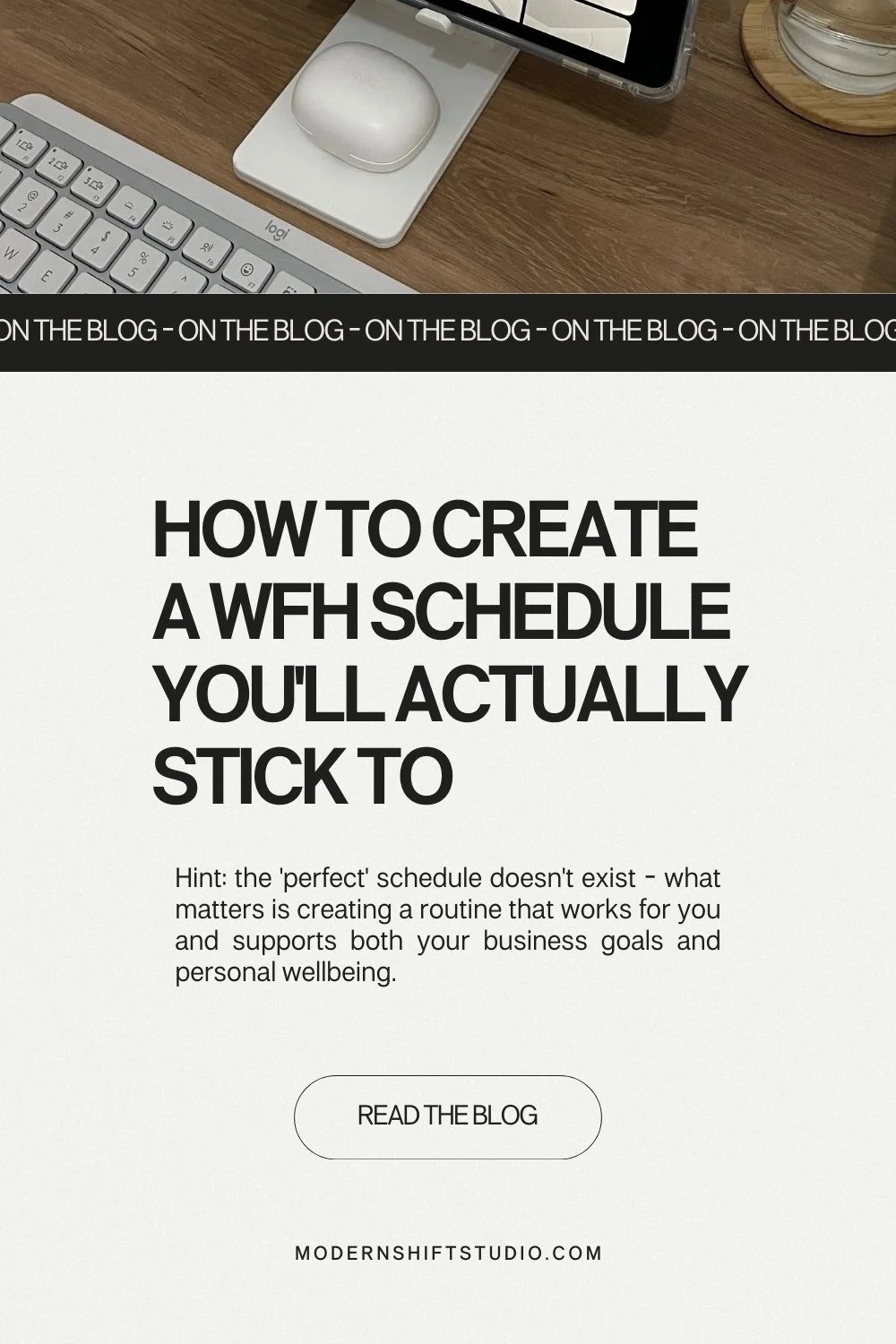How to Create a WFH Schedule You'll Actually Stick To
Let's rewind for a sec to about 17 years ago when I caught the work-from-home bug. Like most of us, I used to daydream about ditching my 9-5. I imagined a world where I traded in my skirts for yoga pants and ditched the 6am alarm. The vision was crystal clear: leisurely mornings with a full pot of coffee and hours of self-care before digging into about 4 hours of work (ALL of which I was sure to passionately enjoy every day, of course).
Fast-forward to that glorious day I packed up my desk and dove headfirst into online entrepreneurship. I was ready to bask in that glowy dream!
But plot twist: it wasn't quite the fast lane to freedom I thought it would be 😬 Between juggling client calls, cooking up fresh content, managing proposals and invoices—the boundaries between “work time” and “me time” were blurry at best. Turns out, when there's only about 5 steps to your office, it’s ridiculously easy to fall into the "all work, no chill" rabbit hole.
It took years of trial and error to get my act together and create a balance that works for me. (And let's be real, it's always a work in progress!) If you're currently wrestling with the messy bits, know that you're not alone. Here are a few tips to help you find your own balanced schedule:
7 Steps to Create Your Ideal Work-From-Home Schedule
1. Define Your Ideal Day
Get honest about what YOUR ideal day looks like. Stop scrolling through everyone else's picture-perfect routines on Instagram and start thinking about what truly works for you. When are you most productive? What tasks light you up? How do you want your day to flow? Your ideal schedule should be unique to you and your own personal goals.
2. Prioritize Self-Care
This isn't just about spa days (though those are lovely). This includes the basics like lunch breaks, daily walks, and gym time. Self-care isn't a luxury - it's as essential to your business as your laptop. Schedule these activities like you would an important meeting. Remember, taking care of yourself isn't selfish - it's essential to show up as your best self and sustain your business in the long run.
3. Set-Up a Digital Calendar
Shoutout to my friend Jennifer over at Productively Childfree for helping me finally set up Google Cal in a way that's actually helpful 😅 Sidenote, Google Calendar is my go-to, but use whatever works best for you. Create time blocks for your week to get a bird's-eye view of your schedule. I like to set up a calendar for different categories - personal, admin, marketing, client work - and color code them so I can see what's going on at a glance.
4. Build in Buffer Time
If you're anything like me, I'm not always good at estimating how long it's going to take me to complete a task! That's why I suggest adding small gaps between tasks or meetings to allow for unexpected interruptions, meetings that run late, or to give yourself a moment to reset between activities. These brief pauses can help you stay on track even when things don't go exactly to plan.
5. Schedule Social Time
Working from home can be isolating (even for introverts like me!) so make sure to plan for social interactions. This could be virtual coffee chats with other biz owners or just grabbing a drink with a local friend. Regular social contact is good for your mental health (and it can lead to fun new ideas for your business too!).
6. Plan for Flexibility
I fought against having a schedule for sooo long because I love flexibility! And the truth is, you can have both. Similar to building in buffer time like I mentioned above, make sure you're not scheduling EVERY minute of every day. Leave some unscheduled time in your week for spontaneous coffee dates or to handle unexpected tasks that inevitably crop up. While structure is important, being too rigid can lead to stress when things don't go to plan. This flexible time can be used to tackle surprise projects, deal with emergencies, or simply to take a break!
7. Conduct Weekly Reviews
Set aside time each week to review your goals, adjust your schedule if needed, and plan for the week ahead. This regular check-in allows you to celebrate your achievements, learn from any challenges, and ensure you're staying on track with your goals.
It took me years to find my balance, and even now, it's constantly evolving. Some days you'll nail it, and others you'll find yourself working in your pajamas at 11 pm (we've all been there!). The key is to keep experimenting, stay flexible, and most importantly, be kind to yourself in the process.
Remember, the 'perfect' schedule doesn't exist - what matters is creating a routine that works for you and supports both your business goals and personal wellbeing.
Will you try one of these tips for your own WFH schedule? Let me know in the comments!

